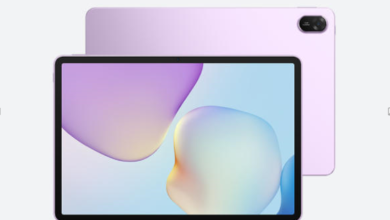WhatsApp Web vs Telegram Web: A Feature Comparison

In the world of instant messenger, switching between your phone and your computer is no longer a luxury, but an obligatory one. For billions of its users, WhatsApp Web and Telegram Web are the two main ways to stay connected on a desktop, whether working at a desk or browsing through a cached set of emails. Both come with the same basic function, but do it in different ways, in different ways, and in different ways it’s not simple to compare both. So let’s do it in a more detailed comparison to help you decide which web application is best for you.
Setup and Device Synchronization
The initial setup process for both platforms is straightforward but hinges on different philosophies. To use Masuk WhatsApp Web you must physically scan a QR code with your smartphone every time you want to link a new computer. Your phone acts as the central hub; it must remain connected to the internet for the web client to function. This tethering can be a limitation if your phone’s battery dies or it loses connectivity.
In contrast, Telegram Web offers a far more independent experience. You actually do start by scanning a QR code and the site is loaded; once it knows it’s connected the web client works independently of your handset. Thanks to Telegram’s cloud architecture your messages are stored on their servers instead of on your phone. This means that you can use Telegram Web but without the hassle of having full access to your chat history when your primary phone is off or unavailable.
See also: Why Transaction Monitoring Is Critical for Fintech and Banks
User Interface and Ease of Use
Both WhatsApp Web and Telegram Web have tidy, intuitive UIs which are pretty close in style to the user interfaces that are found on mobile devices. WhatsApp网页版 shines the most with its well-known two pane layout; a narrow column of chat messages and an open pane for messages in progress. It’s slim and clean and the message view is quite usable. It just takes some getting used to.
Telegram Web is very similar to Telegram but much more customizable, with options like night mode, text scaling and the option to change the background for the chat. The setup differs slightly but can generally be said to feel a little more responsive and packed with functions that you can easily get hold of. If you have the power to customize a chat, Telegram has a pretty good edge over WhatsApp网页版. If you have something more steady and standardized, then you may like WhatsApp Web.
Feature Set and Functionality
It’s actually where the two platforms are most radically differentiated: WhatsApp网页版 offers the core messaging experience, where you can send and receive messages, upload documents, images and videos and participate in group chats. Voice messages (and the current popular & increasingly ubiquitous “WhatsApp Voice & Video Calls”) are also fully supported on the web client – an important advantage for hands-free communication.
Telegram Web is a powerhouse of features. It supports all the basics but adds a layer of functionality that WhatsApp Web lacks. You can send files up to 2GB in size (compared to WhatsApp’s 2GB limit for documents but only 16MB for media), create and manage vast groups and broadcast channels directly from the web, and use advanced bots for automation, news, or games. Telegram also offers a robust search function that can find specific text within any chat, a feature that is far more limited on WhatsApp Web.
Security and Privacy Considerations
Both platforms take security seriously but with different approaches. WhatsApp Web benefits from WhatsApp’s end-to-end encryption (E2EE) by default for all personal and group chats. This means your messages are scrambled and can only be decrypted by the intended recipient(s), even on the web client. However, this encryption is tied to your device keys.
Telegram uses a different model. Only its “Secret Chats” are end-to-end encrypted, and these are not available on Telegram Web. Standard cloud chats on Telegram are encrypted client-to-server and server-to-client, but the company holds the encryption keys. This allows for cloud-based features like multi-device support but is a point of contention for privacy purists who prefer WhatsApp Web’s blanket E2EE approach for all communication.
Performance and Reliability
In terms of raw performance, both web clients are generally fast and reliable. WhatsApp Web has seen significant improvements over the years, with messages syncing almost instantly. However, its dependency on the phone’s connection can sometimes lead to delays or disconnections if the primary device has network issues.
Telegram Web, being cloud-native, is often praised for its speed and consistency. Messages sync instantly across all devices simultaneously. The ability to start typing a message on your phone and finish it on the web without a hitch is a testament to its robust synchronization. It handles large file transfers with more grace and less likelihood of failure compared to WhatsApp网页版.
Telegram Web is a very powerful and comprehensive messenger. It offers all the necessary features but with some additional features that WhatsApp Web can’t offer. You can send files up to 2GB (compared to WhatsApp’s 2GB limit in terms of document uploads but only 16MB for media uploads), you can create and manage lots of groups and broadcast channels from the web as well as use advanced bots for automation, news and games and you can even do smart search for any particular text in a chat which is far more limited on WhatsApp Web.
Security and Privacy Considerations
Both have serious security plans but with quite different approaches. Whatsapp Web benefits from WhatsApp’s end-to-end encryption (E2EE) for all personal and group chats automatically (i. e. that your messages are scrambled and can only be decrypted by the intended recipient(s) even on the web client) which is why all the scrambled message can’t be decrypted by anyone even with your device keys.
Telegram also uses the different model. Only “Secret Chats” are end-to-end encrypted (and they are not available for Telegram Web). Cloud chats on Telegram are encrypted both client-to-server and server-to-client, but the company holds the encryption keys, which allows the messaging app to offer “features” like multiple devices, but it brings issues of privacy with its blanket E2EE mode for all communication.
Performance and Reliability
Likely raw performance wise, both web clients are quite speedy and reliable. WhatsApp Web has experienced a lot of development in recent years and now receives messages almost instantly. In practice though, it relies on the phone connection so it may be slow to sync or connect depending on network problems on the primary device.
Telegram Web is cloud native and one of its major virtues is that messages sync almost instantaneously, across different gadgets and phones simultaneously. Since you start typing on your phone, and finish typing on the web after a few minutes, that speaks volumes about this feature’s fast synchronization and handling large file transfers with more grace and less chance of failure as compared to WhatsApp Web.
Conclusion
The decision to choose between WhatsApp Web or Telegram Web is mostly a matter of priorities. If you prioritize universal adoption, end-to-end encryption for all chats, and a low-effort user experience that’s as close to what you do on your mobile device as possible, then come back to WhatsApp Web. This is your go-to solution to stay in touch with all your existing contacts.
Choose Telegram Web if you’re one of the power users who needs various advanced features like transferring massive files, independent between devices, bots and highly customizable chats. The web-based feature and flexibility





